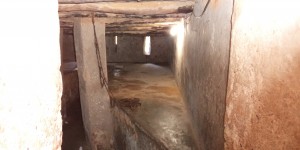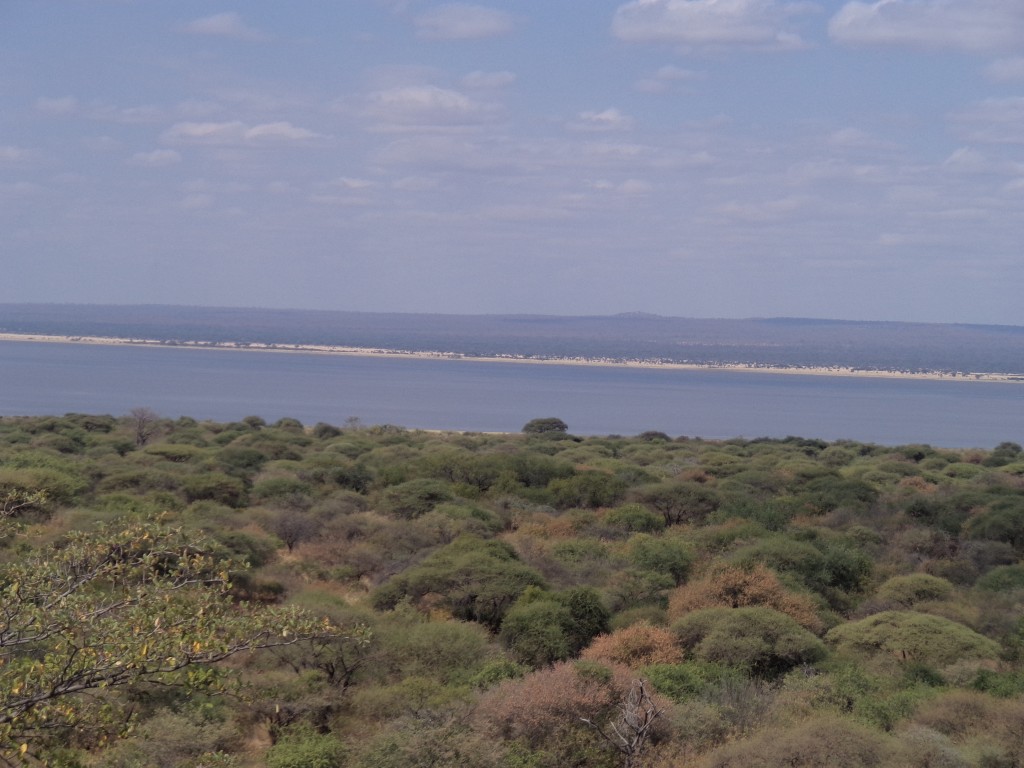Tanzania – My first time in Africa
By Stavros Afionis S.Afionis@leeds.ac.uk
A few months ago Nico Favretto sent Lindsay Stringer and I an email announcing a conference on the green economy in the South, for July 2014 in Dodoma, Tanzania. “We should apply for this!” he wrote. It was an excellent opportunity to present our work on Brazil’s ethanol diplomacy in Africa so we submitted an abstract, which was accepted, and then had to tackle the question of who should go? Lindsay and Nico had other work commitments, luckily for me. It would be my first visit to Africa and I was very much looking forward to it. It would also be the first time I had to apply for a visa. A trip to remember undoubtedly…
The next few months were spent making travel arrangements and preparing the conference paper. Very time-consuming. What is the most convenient flight? How do you get from Dar es Salaam to Dodoma? The organizers sent me photos of the little 10-seater planes that connect the two cities. Once I saw the photos I made up my mind immediately: I would get the bus. In any case, with a few days left for my flight to Tanzania all was ready apart from one little thing: the visa. Apparently, you can post your passport to the Tanzanian embassy and sort out your visa that way. As I had never applied for a visa before, I decided to be super diligent: I would travel to London, take care of the visa and come back to Leeds all on the same day. I spent ten hours on a bus. I think next time I will post the passport…
Eventually, the day arrived. Booked a taxi to the airport and after a 10-hour flight I was in Dar es Salaam late at night on Friday the 4th of July. Went straight to my hotel in the city centre to rest, as the following day I had planned to visit Zanzibar. Had heard so many things about the place and I was really eager to visit it. The next day, I will never forget the moment I got out of the taxi at the ferry terminal. I suddenly saw a dozen people running up to me shouting “porter!” A guidebook that Lindsay lent me explained that you need to be very careful in such occasions and never lose sight of your luggage. I politely refused their help and went on to the waiting area. The ferry was quite modern and after a 2-hour trip I was in Zanzibar. I left my stuff at the hotel and set out to discover Stone Town, Zanzibar’s capital and a UNESCO heritage site. With the guide at hand, I explored for a couple of hours. Even though it’s seen better days, Stone Town is quite an interesting place. Unique architecture and very narrow little alleys. Characteristic of Stone Town is its traditional wooden doors. They differ depending on whether the owners were Arab or Indian. Many people offered to act as tour guides, but I would always turn their offers down preferring to adventure out unimpeded. I walked on the main shopping area and seafront fill of all the usual tourist trappings, but after a couple of hours I realised that I was a bit lost. At this moment a really nice gentleman turned up and offered to take me around. He looked trustworthy, so I followed him. His name was Steve, and he showed me everything. The former slave market, the mosques, the churches, the night market, the fort. I was really amazed by the cells in the slave market. So tiny, but yet up to 50 or more people would be crammed there. Zanzibar was full of history…
On Sunday, I spend an hour or so in Stone Town and then returned to Dar es Salaam, as on Monday I had to travel to Dodoma. Early morning I arrived at the bus station. This is the second thing I will never forget as long as I live. I would hardly describe this as a bus station. It was basically bare earth with all sorts of buses chaotically parked with hundreds of people searching for the right bus or selling all kinds of merchandise. It was a vibrant, lively, yet chaos place! After sometime I managed to locate the conference volunteers who showed me to the right bus. Half the conference participants were on that bus. The trip to Dodoma lasted for 7 long hours. The region between Dar es Salaam and Dodoma is mostly arid or semi-arid, but I did not really care. I had not seen anything like this before, so for me it was quite a sight. We arrived late in the evening and went straight to our hotels. Next day the conference would start and I was set to present. So I really needed to rest. Next day, I got a glimpse of the city during the taxi ride from the hotel to Dodoma University.
While Dar es Salaam is the economic heart of the country, Dodoma is the capital. I was reading in the guide that Dodoma became the capital back in the 70s, and that there were grand plans in place to turn this little town at the time into a buzzing metropolis. However, inadequate water supply meant that these plans had to be shelved. Nowadays, Dodoma is a medium-size city, which gets busy only when the parliament is in session. Anyway, the taxi was nearing the university and I was quite impressed by what I saw. Dodoma University was established only in 2007, but already has more than 15,000 students. There are six colleges and there is a vast number of massive modern white buildings scattered throughout the horizon.
Following the customary opening speeches, I gave my presentation, which I was pleased to say, attracted a full crowd. A number of questions were asked about whether Brazil has made inroads in Africa with respect to biofuels. I was prepared to answer these, but then a question was raised that made me think: “You told us what Brazil wants, but you have not really talked about what the Africans want”. Indeed, a very interesting question. Following my presentation, I spent the next three days networking, socialising and attending conference presentations. A number of researchers were doing research on biofuels, allowing for some interesting discussions to take place. Apart from biofuels, REDD+, green economy, carbon markets and sustainable tourism were some of the other topics that were covered. The advantage of hosting a conference in an African country is that it allows for greater participation from Southern researchers. It was really interesting to see how they view the green economy concept and the role it can play in enabling sustainable development in their countries. Stimulating discussions were held on how local people might mistrust such discourses and actively resist them, for example through setting fire on carbon plantations. The green economy can be such an elusive concept. It can mean different things to different people. For me, being exposed to these different perspectives was one of the most valuable aspects of the conference. Overall, it was a really interesting and well-organized conference. During one of the nights we went for the conference dinner in a place called “African dreams”, owned by an Italian. I really wanted to ask him the story of how he came to live here, but I hesitated…
Thursday the 10th of July was the last day of the conference. During the afternoon I spent an hour or so sightseeing and then headed back to the hotel to pack up my stuff for the fieldtrip the next day. We would go to Babati, a little village 7 hours to the north of Dodoma. First we would visit a village-managed forest reserve and then the Burunge Wildlife Management Area. We arrived at Babati on Friday afternoon and headed straight to a restaurant for a late lunch. The place served a variety of dishes. You could get rice, beans and vegetables, either with chicken or fish. So hard to choose! I went for chicken and was not impressed. After lunch we went to the hotel. It was about 6 o’clock and some of us decided to go for a walk around the fields. As you can see in the photo below, it was a really nice way to pass time…
Next day we visited first the village-managed forest reserve. Apparently, it is customary to be briefed first by the Chairman, whether you want it or not (costs 20,000 Tanzanian shillings – TNS, which is about £7). Following this interesting – I must admit – one hour-long brief by the Chairman, we went to the actual forest. We were told that the place had been completely deforested some years ago and I was therefore quite impressed by the fact that the forest had recovered to a great extent. Next stop was the Burunge Wildlife Management Area. Again, following the customary 20,000 TZS-worth brief we were taken to the actual site. During the brief I had asked if we would see any elephants and I was told that there was a chance that my wish might come true. In the end I had to settle for a wild goat. Anyway, they took us up a small hill and the view from up there was simply breath-taking! My trip’s high point for sure!
Following that, we headed back to Babati. It was about 5pm and went straight for food. This time I went for the fish option. Good choice! After eating we headed back to Dodoma. Another 7-hour bus ride. We arrived there Saturday midnight, only to get some sleep before taking the Sunday morning bus to Dar es Salaam. Another 7 hour bus ride. While in Tanzania I must have spent something like 35 hours in buses. I arrived in Dar es Salaam Sunday afternoon and headed straight to the hotel to have dinner and watch the World Cup final, which Germany deservedly won. Monday was empty, so I reviewed a couple of papers and spend a few hours going around the city centre. Dar es Salaam is a chaotic, polluted, city which leaves little lasting impression on a tourist. The museum was descent, but that was all. On Tuesday the plan included a visit to the Brazilian embassy to interview an official there with respect to Brazil’s ethanol diplomacy in Tanzania, as well as in Africa in general. Following a great interview, I went back to the hotel to pack my stuff up and head to the airport for the flight back to Leeds. Half a day later I was home sleeping. My first trip to Africa was over. An experience I will never forget!



